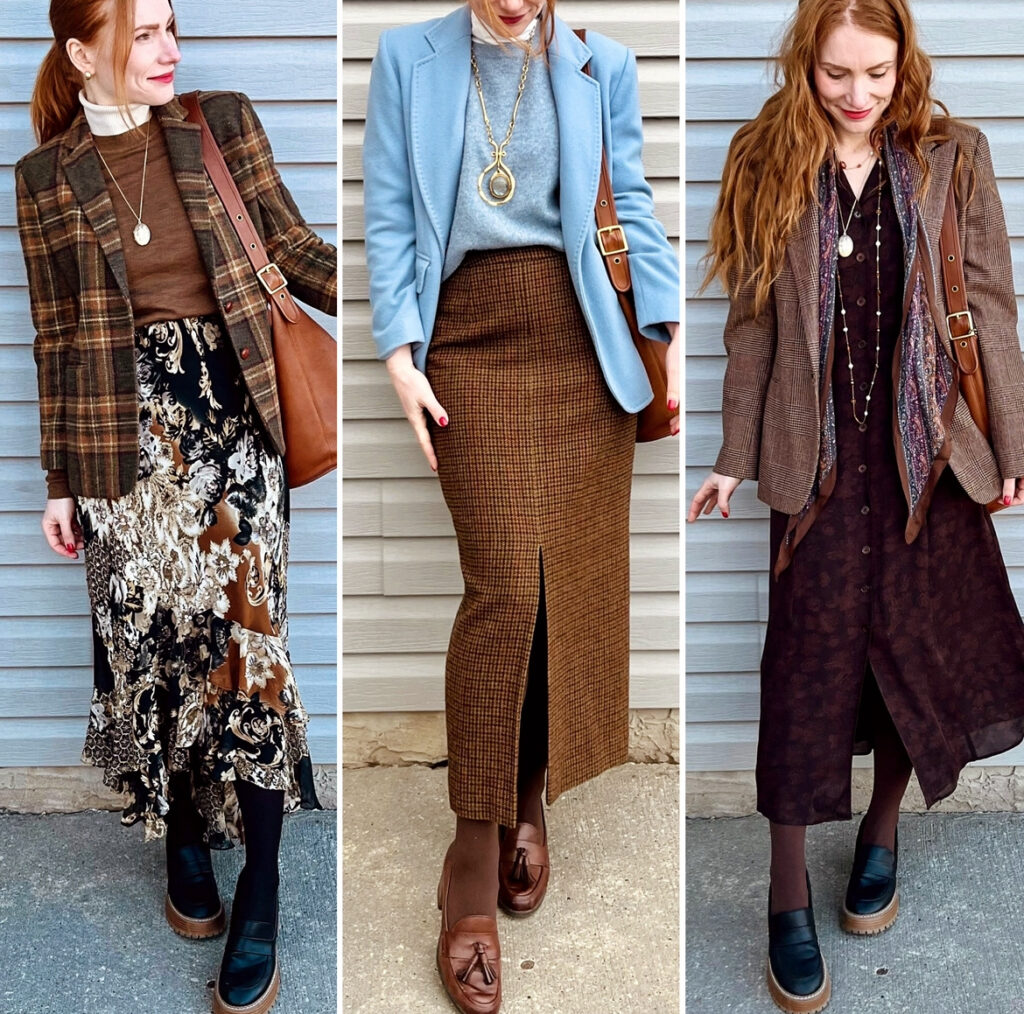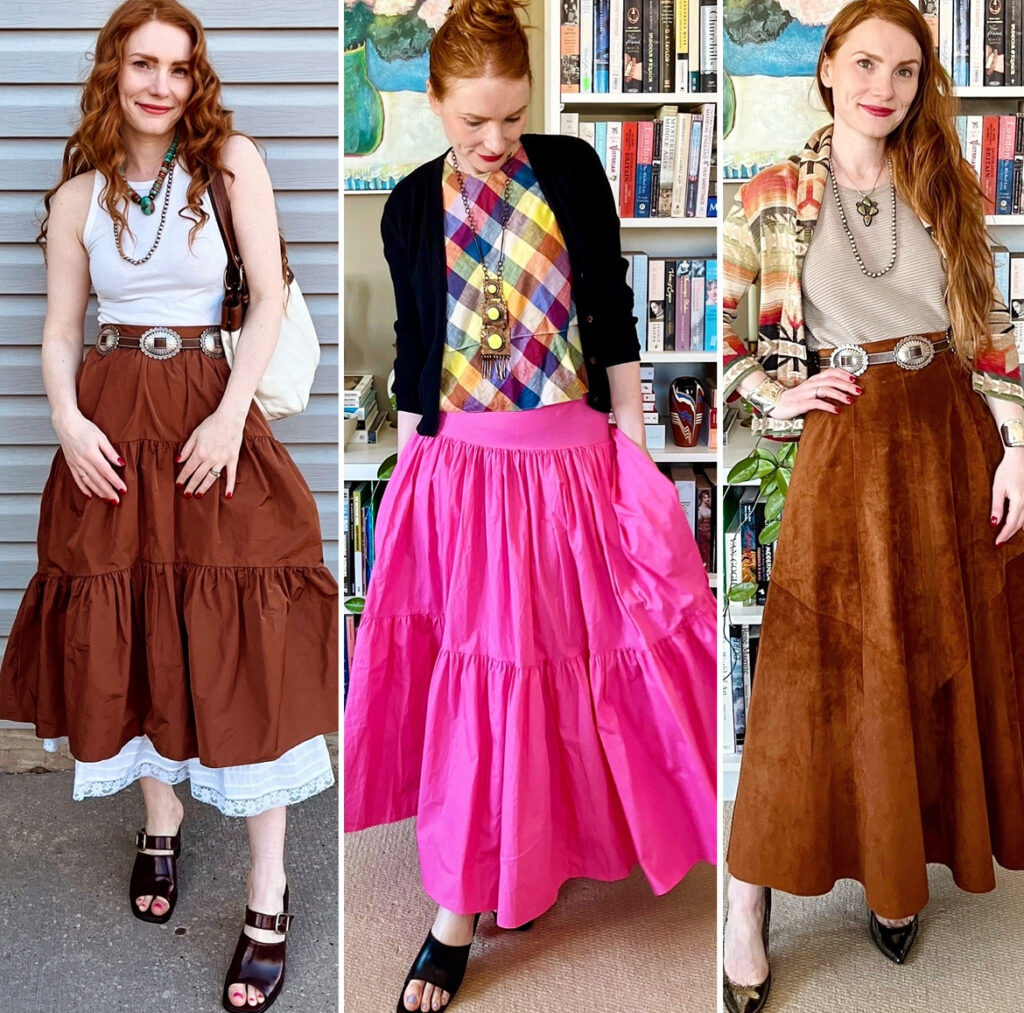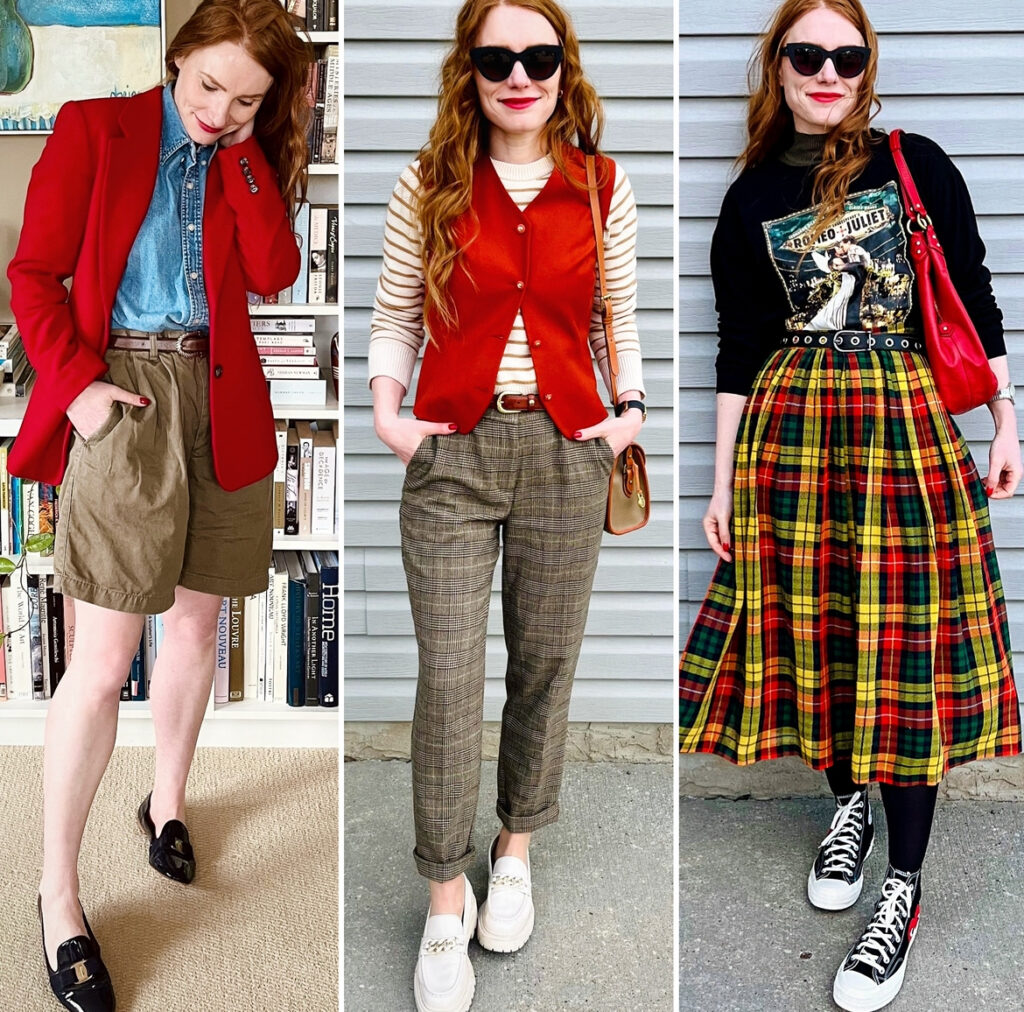My annual clothing swap is one of the highlights of my social calendar and the official start of the summer season. This year was no exception, on either score. A fun time was had by all, on a gorgeous afternoon in my blooming garden. It was, in fact, a scorcher of a day; luckily, I’d put up the canopy again this year – not aesthetic, but very handy for extra shade. After 18 years, I’ve got the whole programming down to a science. The actual event, on the other hand, is always a delightful surprise.
Every year, the guest list is slightly different and so, of course, are the things we swap. This year, there were 11 of us – including one “swap newbie” and my daughter. My daughter started hanging out with us at swap a couple of years ago, but this was the first time she was a full participant in every sense; she brought her own things to swap and everything. As a sidebar, while I don’t include kids’ clothing specifically in my swaps, I always encourage my guests to pick up things for their (older) kids, if they see something they think might work. My daughter turns 12 this year, which might seem a bit young to participate in an adult clothing swap, but the reality is that she’s already 5’4 and wears the same shoe size as me; she fits right in, no pun intended. I can’t express how happy it makes me to see her embrace the secondhand ethos – thrifting with me, doing clothing swaps, etc. For her, this is simply ‘normal’ life, much as going to the mall was ‘normal’ for me when I was growing up. I don’t think I need to explain why I think this is a Very Cool Thing. I’m not the type of parent who pats herself on the back very often – the proof of whether I’m doing a good job is still years away, and it’ll be my kids who decide the final verdict – but this is one instance where I feel like I do deserve one.
(Further sidebar, but I also love to see my daughter confidently explore her personal style – without the hangups I had at her age – and I think that has a lot to do with her exposure to thrifting. I’ve always believed that shopping secondhand pushes/helps people to develop their own “eye” / point of view, rather than follow what others dictate is cool, interesting, etc.)
Ok, back to the swap. This year, I had about 5 bags of clothing and accessories to contribute to the swap. Going forward, I think I will have less. A couple of (interconnected) reasons for that: (1) my shopping has slowed down a lot; and (2) I’m buying with a narrower focus and doing less experimenting. This is a good thing, and an extension of my having reached a place where I’m happy/confident/comfortable in my own style. It will mean that I have less to contribute to future swaps, but that’s ok; I know that there will always be more than enough. Case in point: this year, even though I ended up picking up more pieces than I expected or intended, and even though everyone else took lots as well, we still had several bags’ worth of leftovers to be donated.
Let me digress again. Clothing swaps involve a tricky balance. You want to have enough supply so everyone can find something they love (and fit). Style being subjective, this means that for someone to end up with 3 pieces, you might need 10 pieces for them to choose from. Those are not exact numbers, by the way. But you get my point. It’s why I don’t limit the number of items people can bring to my swap; better to have extra, than not enough. It’s also why I save a lot of my unwanted clothing over the course of the year to bring to the swap so that, regardless of what others contribute, there is a good “baseline” of options. Obviously, I can’t do that in an extended size range, but I try my best. It’s something I might not be able to do in the future … but we will figure it out.
I came away from the swap with about 2 (very full) bags of stuff, for both me and my daughter. Here’s what I picked up:

I love picking up miscellaneous items because they can be just as fun, not to mention functional, as clothes. To wit, this year I got: skincare and hair products for curly/wavy hair (including a cool hairbrush). I’ve been on a journey to find my perfect wavy hair routine, and getting products for free is extremely convenient for that. I also got a trinket dish … and dontcha know, I collect Blue Mountain pottery. The book was for my husband, so he wouldn’t feel left out, LOL!
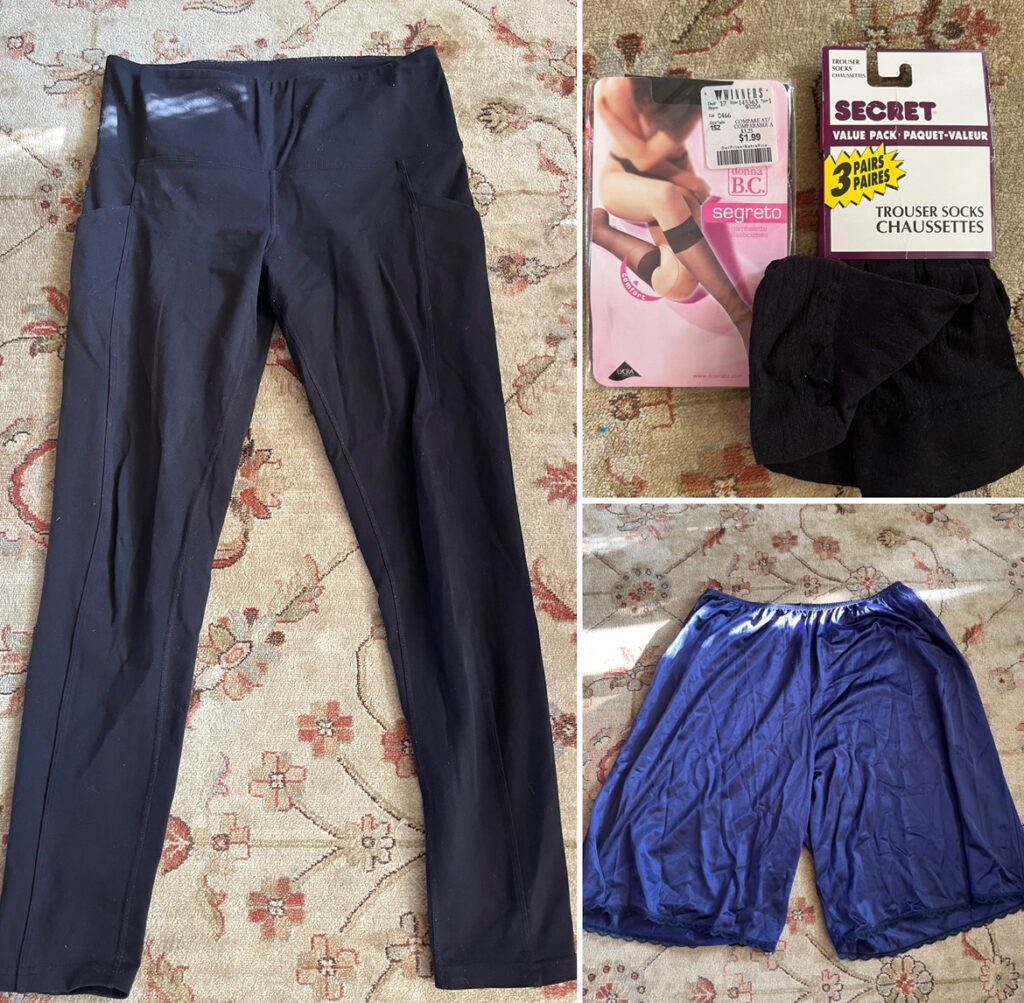
I also love picking up functional items, like: workout leggings (with pockets, which are a must for me), vintage bloomers (to wear under skirts), and socks.

Got two pairs of shoes. I’m obsessed with the loafers. I have been wanting a brown pair of loafers for ages – score! The J. Crew sandals were also a score for me; I’ve had the black version for 6+ years now, and still wear them non-stop every summer. It’s my fave style of sandals. It goes with everything. This silver pair is brand new.
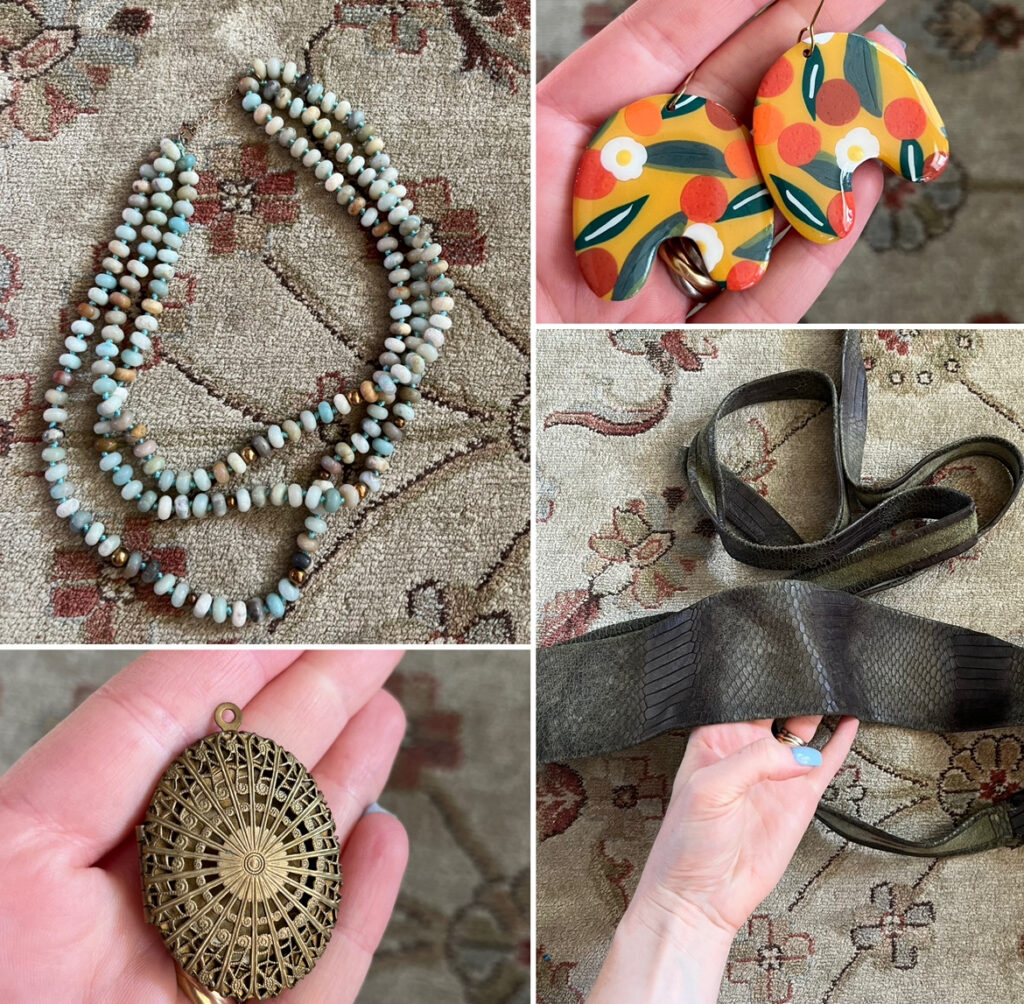
Got some fun accessories: amazonite necklace, cute polymer clay earrings, a sweet locket, and a leather wrap belt.
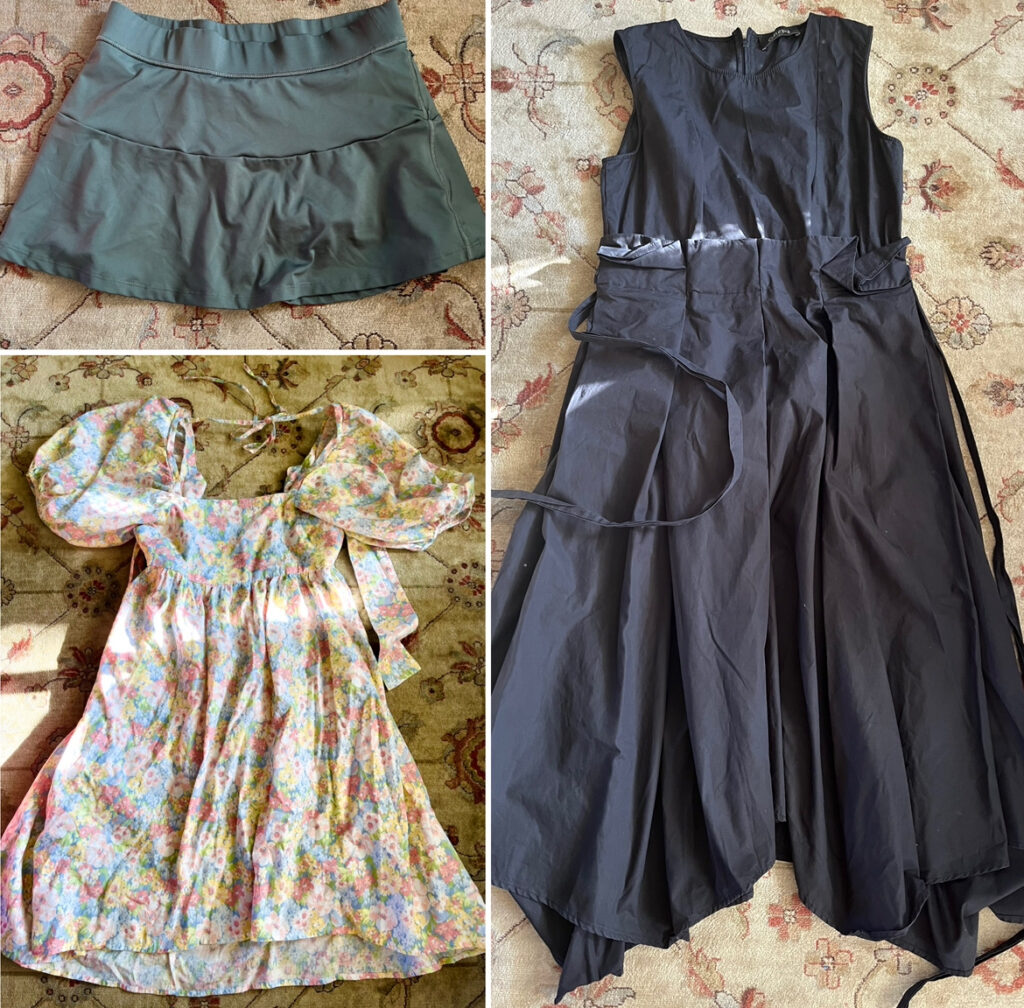
These are the pieces my daughter chose for herself. She was very discriminating in her picks, and I love that for her. These are items that suit her style really well.

I got 2 swimsuits. I don’t swim often, but I still end up needing a swimsuit a few times a year. I hate buying new ones, so it’s handy to have a few options on hand. These were both brand new.
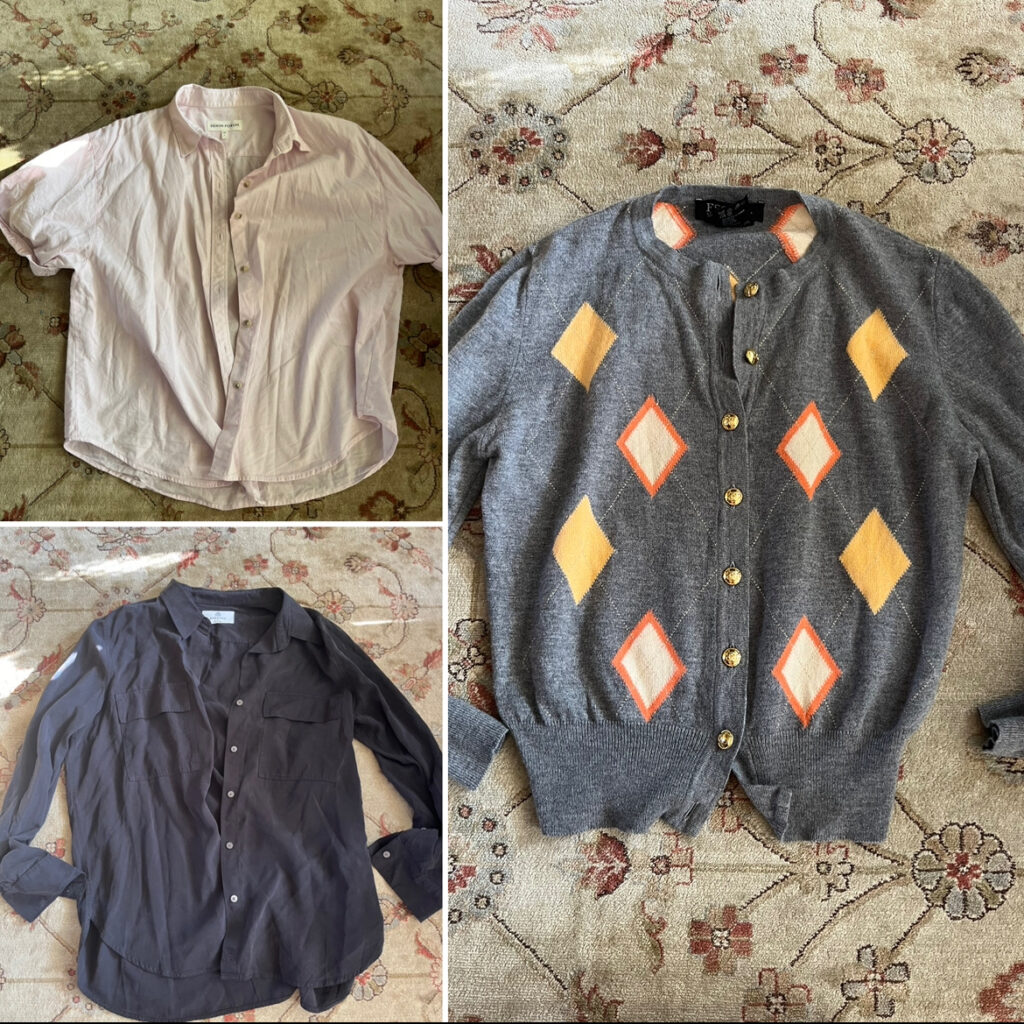
I got three tops, including 2 basics that will be good for summer, and a vintage Escada cardigan.

I got 2 pairs of pants, including the vintage Guess khakis. You know I can’t pass that up … much as I can’t pass up a pair of wide leg cropped jeans.
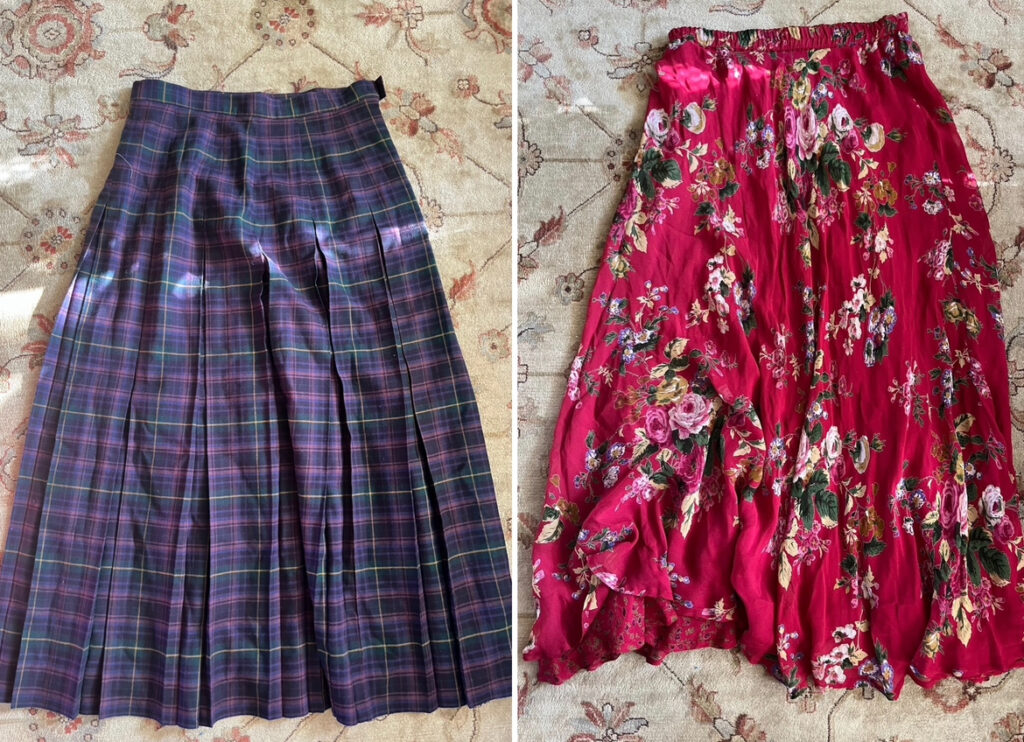
But my fave picks from the swap were these two skirts: vintage Laura Ashley plaid, and vintage Orvis floral. OBSESSED. I’ve worn the red skirt twice already. Can’t wait to do it again. Summer, here I come!
Alright, this has been an incredibly chaotic post … which is somehow appropriate because my clothing swaps are a bit chaotic, in the best way possible. We chat, we laugh, we try on clothes, we cheer each other on, we make a big ol’ mess – it’s like a girls’ slumber party in the middle of the afternoon, with snacks and “free” shopping and zero judgment.
Can’t wait to do it all again next year!

